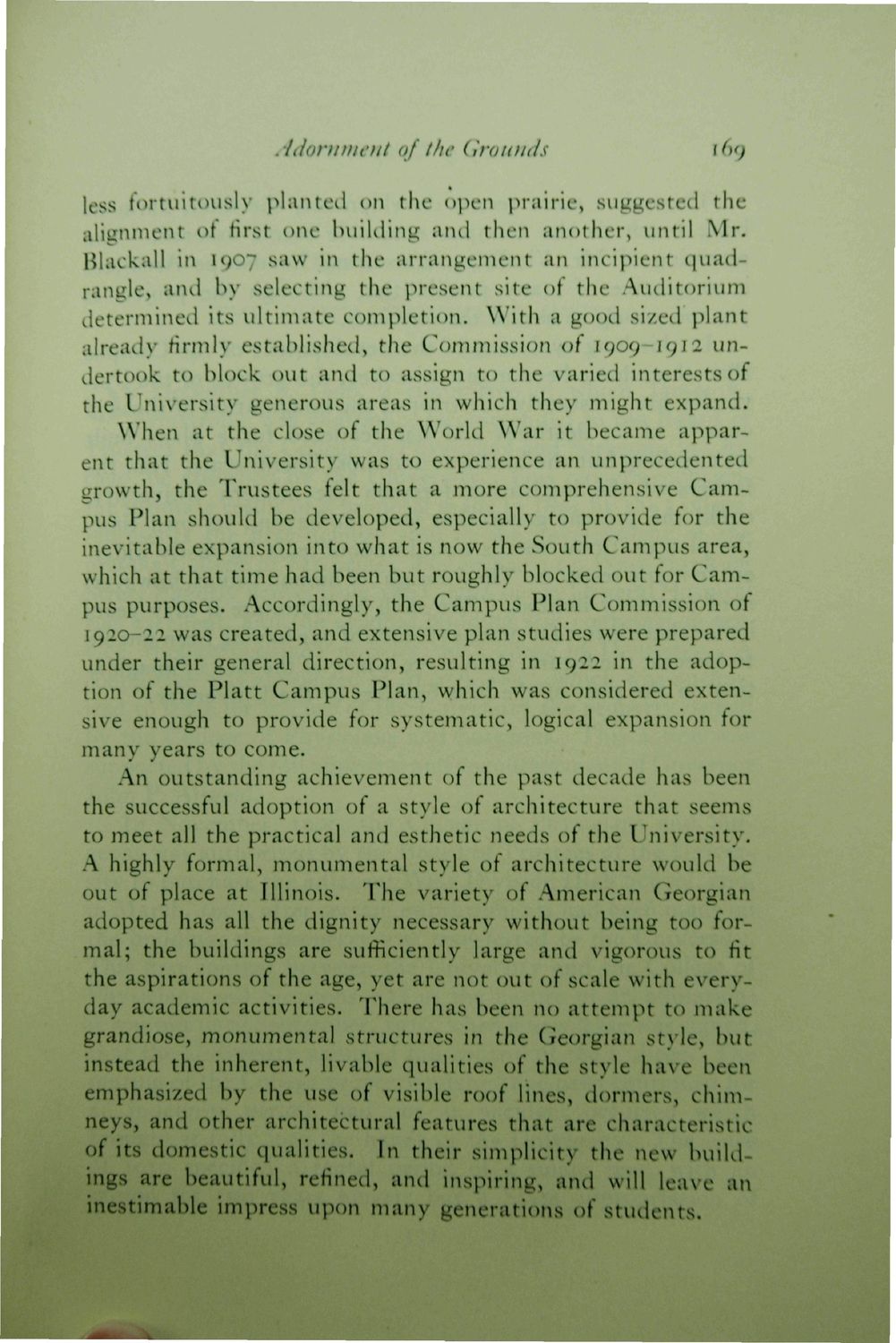| |
| |
Caption: Book - 30 Year Master Plan (Tilton & O'Donnell)
This is a reduced-resolution page image for fast online browsing.

EXTRACTED TEXT FROM PAGE:
Adonwtent of the Grounds 169 less fortuitously planted on the open prairie, suggested the alignment of first one building and then another, until Mr. Bkicka.ll in 1907 saw in the arrangement an incipient quadrangle, and by selecting the present site of the Auditorium determined its ultimate completion. With a good sized plant already firmly established, the Commission of 1909—1912 undertook to block out and to assign to the varied interests of the University generous areas in which they might expand. When at the close of the World War it became apparent that the University was to experience an unprecedented growth, the Trustees felt that a more comprehensive Campus Plan should be developed, especially to provide for the inevitable expansion into what is now the South Campus area, which at that time had been but roughly blocked out for Campus purposes. Accordingly, the Campus Plan Commission of 1920-22 was created, and extensive plan studies were prepared under their general direction, resulting in 1922 in the adoption of the Piatt Campus Plan, which was considered extensive enough to provide for systematic, logical expansion for many years to come. An outstanding achievement of the past decade has been the successful adoption of a style of architecture that seems to meet all the practical and esthetic needs of the University. A highly formal, monumental style of architecture would be out of place at Illinois. The variety of American Georgian adopted has all the dignity necessary without being too formal; the buildings are sufficiently large and vigorous to fit the aspirations of the age, yet are not out of scale with everyday academic activities. There has been no attempt to make grandiose, monumental structures in the Georgian style, but instead the inherent, livable qualities of the style have been emphasized by the use of visible roof lines, dormers, chimneys, and other architectural features that are characteristic of its domestic qualities. In their simplicity the new buildings are beautiful, refined, and inspiring, and will leave an inestimable impress upon many generations of students.
| |